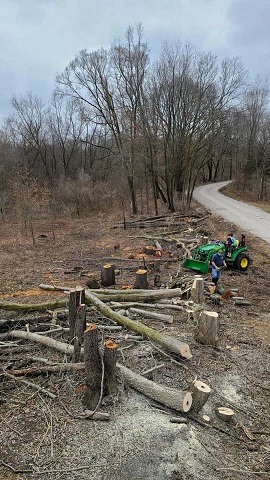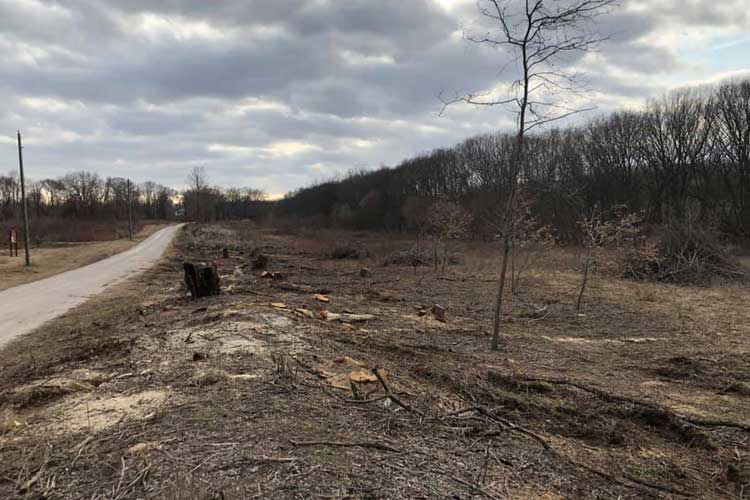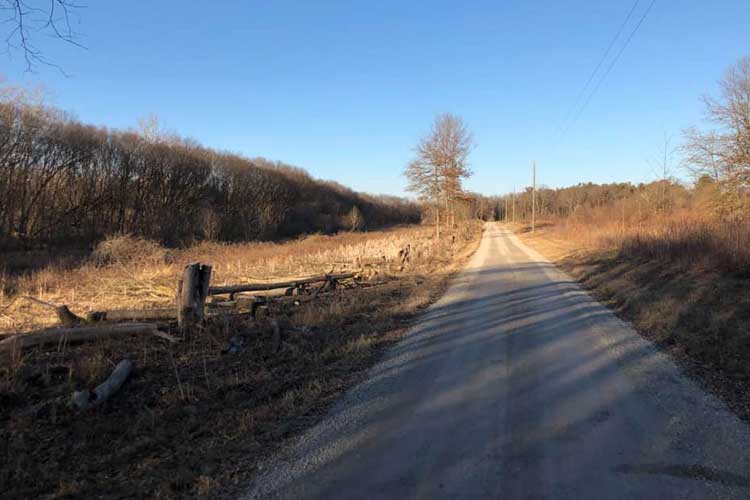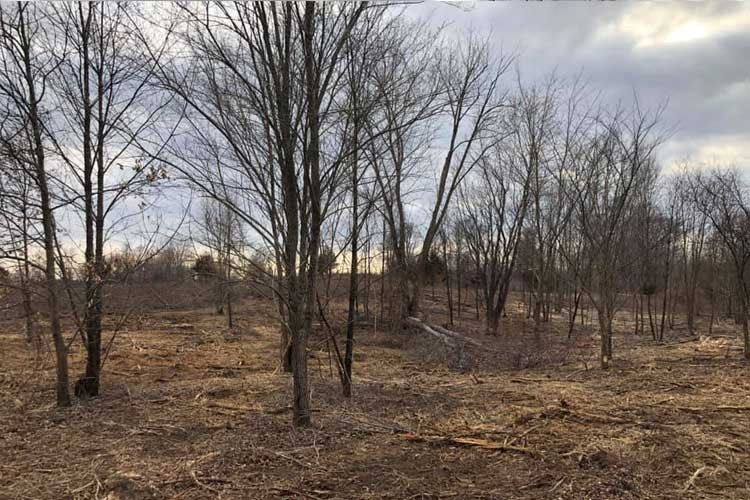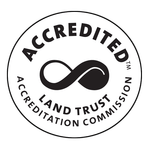News
Granville Sand Barrens and Roy Whistler Wildlife Area Restoration Update
Another transformative project is underway.
With funding support from the Roy Whistler Foundation, we are working to recover several acres of exceedingly rare sand barrens habitat at our Granville Sand Barrens and Roy Whistler Wildlife Area properties.
This project started in the fall of 2019 with Fecon mowing of thick Amur honeysuckle on the west side of the road which splits the Roy Whistler Wildlife Area. The Fecon work was donated by our friends at Arbor America, who have committed to donating 4 days of forestry mowing with their machine each year. They put in 4 days in the fall of 2019, and another 4 days in early 2020.
After the initial honeysuckle was mowed, we had another NICHES supporter, Aaron Record, bring out his bucket truck and chipper to start topping out the thick trees at a heavily discounted rate. We coupled volunteer workdays and staff effort with his efforts to push through a lot of very difficult work. Some workdays were coordinated by staff and others by the volunteer site steward for the property and leader of the deer cull there, T.R. McKinney. T.R. worked with the hunting crew and other locals to process the trees which were being removed for firewood. Then COVID happened and we had to hold our breath for a minute, but the pause was short-lived, and we pressed on.
In the spring of 2020, NICHES started the process of spraying out the resprouts of honeysuckle along with garlic mustard and bouncing bet. As the area recovered, many native species, including the rare golden aster that is a main feature of the sand barrens, showed themselves. Staff and volunteers continued to work on cutting Siberian elm and other invasive species which were not mowed down, carefully cutting them low, treating the stems, and processing and piling the brush for burning later.
In October, Aaron Record returned for two days to finish out topping the roadside trees, and Sam Cody, NICHES Volunteer & Outreach Coordinator, led an AmeriCorps crew to chip the limbs as they came down. T.R. and local volunteers continued to remove and process the trees, piling any remaining brush as they worked.
In November, we were able to complete a prescribed fire east of the road to help keep things progressing on the property and make moving around with equipment easier. This winter, we continued to take out Siberian elm, white mulberry, and more honeysuckle, piling the brush along the way.
Over the last month, T.R. and his volunteers have put in a few weekends of work, dropping the last of the topped trees, cleaning up downed branches, and removing many trailer loads of firewood. And, this past week, Arbor America returned to continue Fecon mowing with 4 more days donated, making incredible progress on the property.
In 2021, we will continue follow-up treatment of honeysuckle resprouts as we recover the rare sand barrens habitat. If all goes according to plan, we will soon more than triple the size of this protected area, connecting the current holdings to the Wabash River on the opposite bank of where we have been working for years to clean up invasive shrubs at Ross Reserve.
This project is a great example of working together as a community to accomplish goals for our natural areas. We are looking forward to keeping the progress rolling into the future for this special piece of the Entrenched Valley in Tippecanoe County.
Thanks to all who have helped get us to this point!
